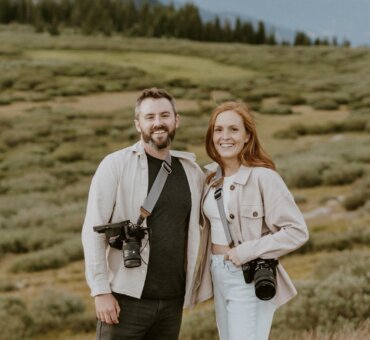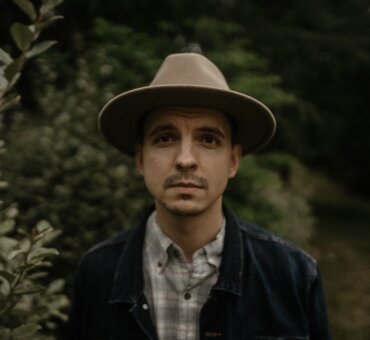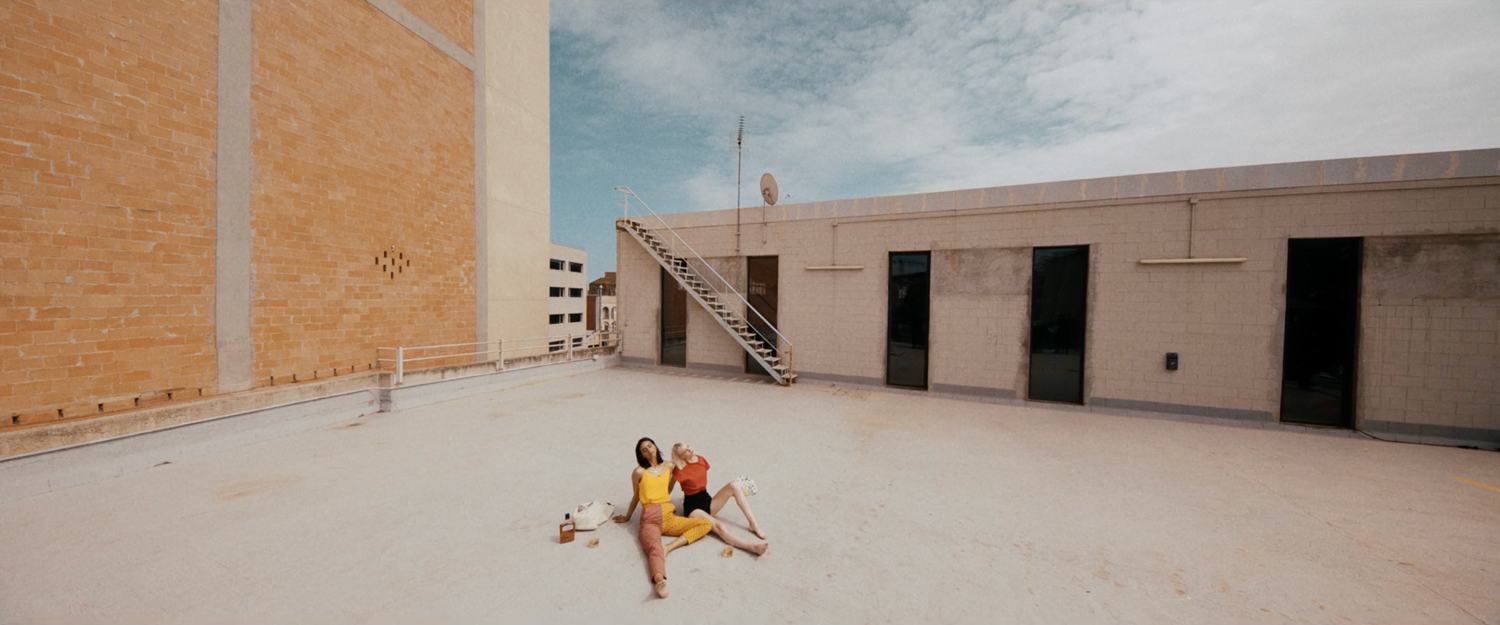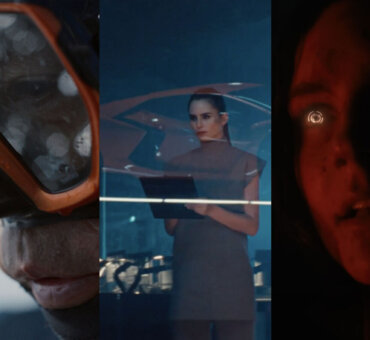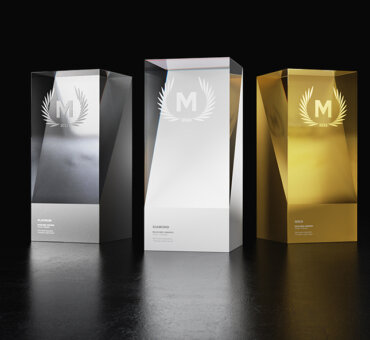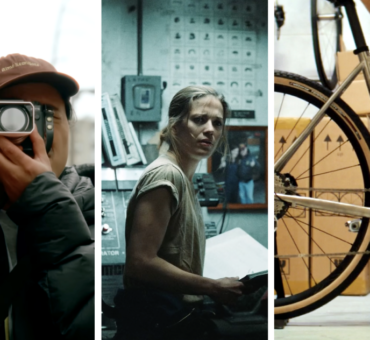Ian Pons Jewell isn’t someone to mince words. As you’ll see right from the beginning of our conversation, he’ll say exactly what’s on his mind, which also says a lot about his creative work. There’s not much in the way of compromise. He’s directed surrealist music videos and short films, and translated that style into commercials that are equally as surreal, for brands ranging from Nike and Audi to Apple and Xbox.
This uncompromising, honest approach to creativity isn’t by accident. But, it also hasn’t made things easier. The difficult side of having a specific vision is that you have to convince people that it’s a vision worth exploring and that takes time:
“I got no commercials early on. [Laughs] I got nothing from 2009 to 2016, so seven years shooting back-to-back music videos,” Ian told us.
But, as we all know, Ian did eventually make it in the commercial industry. And it’s because of that uncompromising vision that he’s found so much consistency and success creating dreamlike spots for his clients. In our conversation, we talked about his complicated relationship with commercial filmmaking, what he learned from it, and why the most important thing to realize about your vision is that it isn’t your vision at all.
Here’s Director Ian Pons Jewell.
Musicbed: What drew you to commercial filmmaking initially?
Ian Pons Jewell: The initial thing about commercial filmmaking that was interesting to me was getting paid. I did three years of university, went straight to London, and found a minimum wage job, editing comedy clips.
I was doing whatever kind of videography jobs I could do as well. I did videos to help show off property for a real estate company. I filmed dentist conferences, anything. I was doing all of these things to pay rent but also trying to stay freelance so I had time for my own work. For my first music video job, I paid for the whole budget. The second job, I got 200 pounds budget. The third one was 300 pounds. The fourth one was 300 pounds again. The fifth one was 500 pounds. I was pot-washing. I worked in the cinema. I did all sorts of jobs, I loved it too.
But there was a point where I was an established, well-known music video director that was looked up to and getting interviewed, and I was still paying the rent by filming wedding videos. So commercials have always been a necessary destination for many directors to get to earn a living and give them some breathing space creatively. That’s the thing that interested me.
But, I could never get into commercials until I got a lucky break. I tried and tried. I actually gave up trying to even get a commercial. My first music video was 2009, and then I finally got a real commercial in 2016, so it was seven years of very active, very busy work as a director, turning out over 40 music videos and shorts before I got a commercial job.
You just qualified commercial work as “unfortunate.” Do you still feel that way?
Don’t get me wrong, I truly love doing commercials and I’m going to be forever grateful to them. It’s allowed me a financial freedom for my personal work like nothing else, along with honing my craft. But, I don’t see it as a final destination. It’s a space in its own right, but also a stepping stone. There’s a lot of noise around it. But often it’s like a lego set with a limited set of pieces.
On the other hand, you learn so much in commercials, in terms of diplomacy and in terms of persuasion. Essentially, you’re bringing a lot of disparate people along to a place which might actually go against their own interests.
You’re trying to make a really great film. You’re not making a film thinking about selling a product, but it ends up doing that as a byproduct of making a great film. There’s a lot of persuasion. You have to talk about why this thing should be done the way it is, and a lot of that ends up being very applicable once you’re doing a film in certain scenarios.
There are a lot of very, very useful and applicable skills from commercials. I’m really proud of nearly all the commercials I’ve done. I think if you make a truly stand out piece of commercial work, it’s harder to do than if you’re doing a short film or music video, because again, you’re dealing with so many different interests and agendas.
There’s also a lot of efficiency built into commercial work.
You have the potential for a high turnaround as the jobs often need delivering quickly from engagement, so you can go from one to another fairly quickly. I learn something on every shoot, regardless of whether it’s a commercial or a short film, or a music video. It’s a lot. The biggest thing is you’re shooting and you’re getting more fluent in various areas.
For me, it was about building my visual language and how to block a scene. I wanted it to become as instinctual as possible. I really noticed it when I did the Sevdaliza music video, and even more so on the James Massiah music video. I was able to very quickly work out the flow with the story and block stuff and adapt.
That kind of thing used to cause me masses of anxiety and nerves just a few years prior. I would regularly have severe nerves the day before and morning of shoots. Now, it’s more butterflies in your stomach rather than full-on anxiety. But getting that confidence that you get with shooting a lot is, I think, underestimated. Quantity can matter in filmmaking, in terms of growing. You become more and more fluent. It’s like anything. If you’re an illustrator, painter or a writer or anything, directing can be the same with the benefit of many hours on set.
So much of your work has a distinct style to it. Do you like to maintain a lot of control over your projects?
At the beginning of a project, I design all of the shots, the movement, everything. It’s put down at the beginning. I sketch it all out. Then, I hand it over to a storyboarder to make my terrible drawings look good, so there’s a heavy amount of the architecture I build from the beginning. I can’t not do that, otherwise I’ll feel discombobulated. I have to design it.
Once that’s in, then I have a clear-ish brief for the team. But, I have really amazing people I work with and they have space to bring their ideas and build. There’s a level of control, in terms of building the architecture, if it was a building, right? Then, the decoration inside or the life of each room is very much a collaboration and working in unison with an amazing crew.
So how do you maintain such a consistent voice?
I don’t think you can pinpoint it. It’s incredible to hear if someone sees something, and they say, “I knew you did that.” But, I can’t say why. It could be a multitude of things from the visual language to movement to tone. You can’t explain tone. It can be something as subtle as a slight shift in the performance of an actor. When you’re watching a film, you’re watching a very personal representation of reality. It’s like a constructed dream.
In a feature or a short film, that constructed dream is very auteur because there’s no outside agendas. It’s easier, let’s say, to have an identifiable author to this dream or film. But, how do you have that in a commercial? There’s a mixture. I’ve got a very particular way I like to shoot things.
Then there’s humor, I guess. I enjoy subverting commercials as much as possible. There’s a part of me that likes to wonder if I can get away with this or that, but also the creatives are often pushing it too. I know sometimes directors won’t put down a great idea in the treatment because they’ve got an imaginary client in their head that’ll kill it, so they don’t put it in. If I have something that comes to me that I think would be great, I put it in, and then I’ll push for it and explain why it should be there, then it can always get killed after or adapted. But it’s how you check the border of limits. It can be pretty difficult. I’m also lucky that the first jobs I did were so creative and crazy, that I got hired for that.
Did that uncompromising attitude make it more difficult to get jobs early on?
I got no commercials early on. [Laughs] I got nothing from 2009 to 2016, so seven years shooting back-to-back music videos. I kept upping my game in music videos. The benefit from that was when I finally got a commercial, I had done over 40 videos, about 30 of them really solid, so when you’re talking to creatives, they’re talking to someone who has this big body of work behind them. They know who you are. There’s not as much angst from their side, perhaps, as say a director who might get a lucky break in a commercial after doing three solid music videos.
I’m not at all unhappy about how long it took, because I think I benefited so much from that larger body of work behind me when I started in ads. I wouldn’t ever change that. It just helped. I went in with a very strong identity. My flag was firmly in the ground.
What advice would you give to a filmmaker who doesn’t want to compromise their own vision?
For those jobs you’re really into creatively, or feel can be pushed further, you have to remember that it isn’t just your vision. It’s the creatives’ vision too. You’re making it with them, so you have to bring people on the journey. That’s the biggest thing. You have wonderful collaborative experiences with them, then you also have bad ones where it doesn’t work out very well.
But it’s not just you saying, “No. You have to do it this way.” If they’re not getting it, you have to persuade them by explaining it. Try something their way. It’s about removing a sense of entitlement toward your vision somewhat. You’re all a bunch of humans with different interests, and you want to take everyone on a journey. You’re trying to convince people to go all the way up this mountain to this thing, which only you can see. There’s also these nice easy flat paths to the side going somewhere else that they all want to take, but only you can see the final film at the mountain top in your brain. No one else can. You have to paint the picture for them and bring them on the more difficult path. That’s what I try to do.
Read how director Jane Qian balances preparation and spontaneity when creating branded content.





































































